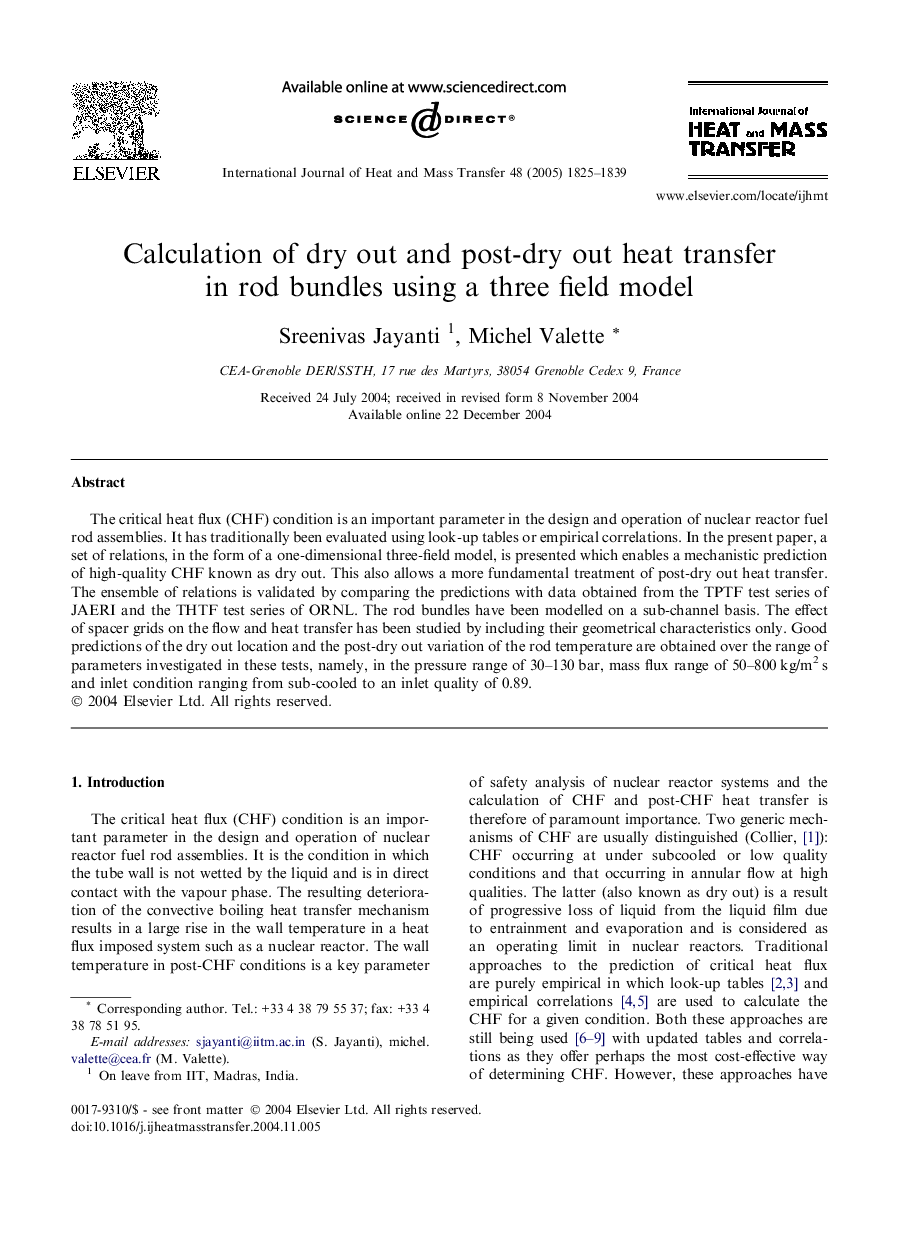| Article ID | Journal | Published Year | Pages | File Type |
|---|---|---|---|---|
| 9691577 | International Journal of Heat and Mass Transfer | 2005 | 15 Pages |
Abstract
The critical heat flux (CHF) condition is an important parameter in the design and operation of nuclear reactor fuel rod assemblies. It has traditionally been evaluated using look-up tables or empirical correlations. In the present paper, a set of relations, in the form of a one-dimensional three-field model, is presented which enables a mechanistic prediction of high-quality CHF known as dry out. This also allows a more fundamental treatment of post-dry out heat transfer. The ensemble of relations is validated by comparing the predictions with data obtained from the TPTF test series of JAERI and the THTF test series of ORNL. The rod bundles have been modelled on a sub-channel basis. The effect of spacer grids on the flow and heat transfer has been studied by including their geometrical characteristics only. Good predictions of the dry out location and the post-dry out variation of the rod temperature are obtained over the range of parameters investigated in these tests, namely, in the pressure range of 30-130Â bar, mass flux range of 50-800Â kg/m2Â s and inlet condition ranging from sub-cooled to an inlet quality of 0.89.
Related Topics
Physical Sciences and Engineering
Chemical Engineering
Fluid Flow and Transfer Processes
Authors
Sreenivas Jayanti, Michel Valette,
